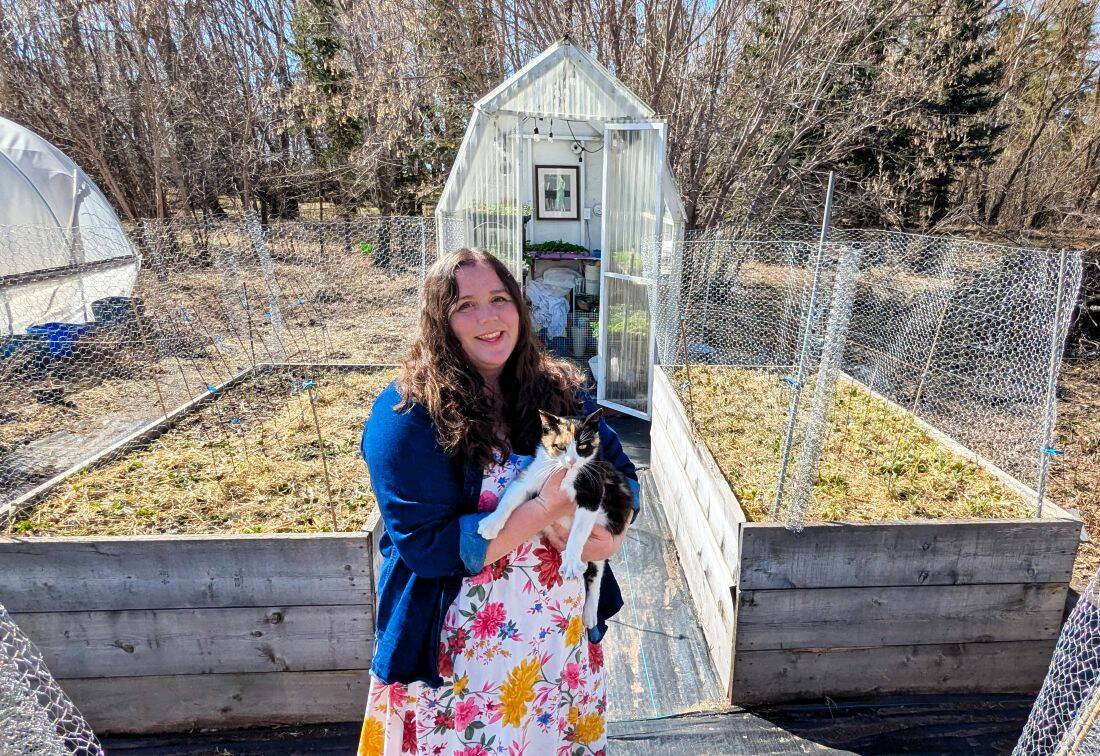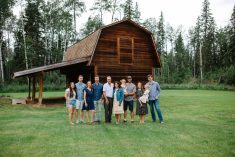Across Canada, the biggest decision today’s farmers will make is choosing who will lead the farm tomorrow. In our fast-paced, fast-evolving agriculture, making the right choice will be critical to success, and maybe survival.
In past, there wasn’t that much choice. The family farm got handed down from one generation to the next by way of the leader’s first-born son.
Claudio Fernández-Aráoz, author and executive fellow for executive education at Harvard Business School, says there was a time when most businesses transitioned this way because the measure of potential was physical strength and the strongest candidates were young males.
Read Also

A season of trial and colour
Following a Saskatchewan flower farmer through the seasons.
This shaped our perception over time and caused us to become unconsciously hardwired to think that men make the best business leaders.
Decades have flown by since physical strength was the key indicator of potential, but past choices and historical norms still influence decisions today.
There’s another side of the coin too. If parents in past automatically opted for the oldest son, the oldest son often automatically felt the job was his for the asking.
Those feelings of entitlement can still run strong. When children grow up working on the farm they may feel they deserve leadership and ownership.
On more and more farms today, however, this can become a problem with a solution. “The idea of entitlement can be very daunting to some families,” agrees Kelly Dobson, founder and performance coach at LeaderShift Inc. in Brandon, Man.
“But it can actually be addressed quite quickly.”
In fact, it can be one of the fastest issues to clear up during farm transition planning. “Entitlement,” Dobson says, “gets built up over unspoken beliefs about how the farm is going to work going forward. Once expectations are stipulated very clearly on behalf of the parents, the beliefs can be disbanded quickly and entitlement can vanish.”
That still leaves the big question without an answer, though. If the first-born bias is outdated and there’s no room for entitlement, how do you decide who actually is the right choice for the next leadership gig?
Get real about the job
Kim Siegers-Robinson, family business advisor and founder at Empower Planning Inc. in London, Ont., recommends you start by establishing a family employment policy.
“We need to be clear on what it looks like to work in the farm business, especially in a larger situation where there are many cousins in the family and not enough room for everyone,” she says. “A family employment policy creates a framework for accepting that there is a business structure and the future of the farm is not just based on family dynamics.”
Siegers-Robinson says the policy should outline what will be expected from family members who want to work in the business full-time. Do they need to pursue post-secondary education? Will the business fund their education? Do they need to work off the farm before coming back?
A family employment policy should also define the path for shifting from being an employee to being a leader and what is required in order to be a sound owner.
On the flip side, it’s equally important that it outline what happens if family members don’t meet the criteria or aren’t performing in their role.
“For people to feel it’s fair, there needs to be a fair process where voices are heard,” says Siegers-Robinson. “I like to see the generations develop this type of framework together because if they define it together, they will live by it together.”
Ownership versus leadership
On the farm, owner-operator is a commonly used business model but Siegers-Robinson advises her clients to think about these roles separately. Ownership and leadership are not necessarily one and the same.
Instead, Siegers-Robinson categorizes the roles family play in a business by four functions: owning, leading, working and supporting.
Leaders and workers have obvious day-to-day roles, but owners may act as workers and not leaders, or may not work in the business at all (in the case of minority shares for legacy purposes). Supporters could be spouses or other relatives who work off-farm jobs but come back to help during busy seasons.
“There’s a difference between owners and leaders; if families don’t split those two up, you have everybody cramming to be leaders because they want to own the farm,” Siegers-Robinson says. Instead, leaders should be chosen based on their interest and capabilities.
Who has leadership potential?
Whether there’s an employment policy in place or not, Dobson finds that many parents have an intuitive sense of who is the best natural leader in the family.
There is often a child who would likely be more comfortable working in the business and being an owner, Dobson says, or there may be one who shows more interest in owning and running the business.
“If parents are unsure who the leader is, they could be looking for a child who has a willingness to learn that’s twice as great as their willingness to take over,” explains Dobson. “In other words, it’s not as much about taking control of the farm as it is that they’re willing to learn all aspects of the business, including the areas they’re not strong in.”
Corporate parallels
Finding and developing future leaders to succeed current executives is a challenge in the corporate world, too.
Stacey Redford, head of human resources at Syngenta Canada, works with leaders of the company to identify ideal candidates for future leadership roles. They use a grid to evaluate people in two ways — one measures current job performance and how well they uphold the values of the company, and the other indicates a person’s potential to take on more and become a leader.
“As part of the succession process, we identify roles that are critical to the organization but we also look at what skills are critical,” she explains. “Strong collaboration, communication and big picture thinking are vital as a leader.”
Syngenta uses individual development plans and “pause to talk” exercises as a way for employees to communicate where they want to go in their career and what type of roles they’re looking for. Some people may demonstrate leadership potential but are actually not interested in leading people, says Redford.
Skill development
Once someone has been identified as a good candidate for leadership and shows interest, the next step is to look at training and development. At Syngenta, Redford notes that this includes opportunities to work on special projects as well as more traditional classroom-style learning.
For farmers who are looking to transition out of their business, she recommends figuring out which skills are going to be most important for the next generation and what type of development would be helpful.
Then get concrete about how you are going to help your future leader acquire the skills and the knowledge they will need. “It’s possible to transition a lot of knowledge over time but you need a longer runway and you have to be intentional about it,” Redford advises. “If you aren’t thinking about sharing knowledge over the next five years, you’re potentially closing that window for learning.”
In Dobson’s experience, farm families can’t start leadership development soon enough. In fact, he suggests that one of the earliest ways that parents can evaluate their children’s interest is to be as transparent as possible so the children understand the connections between the job and the overall business outcomes.
“The single largest missed opportunity is starting too late, which creates a very steep climb for a family member coming in to lead the business at an older age,” Dobson says. “There is a lot to learn and there is a lot of institutional wisdom to glean all at one time.”
On a day-to-day basis, Dobson advises leaders to begin by making time to inform and communicate with the next generation and include them in tasks they wouldn’t ordinarily do.
On his own farm, he takes his children to meetings with advisors and discusses business decisions with them so they build an understanding from a young age.
In addition to internal mentoring, formal coaching and courses like the National Farm Leadership Program can help to prepare future leaders for the job.
Outside employment is great for development too, says Siegers-Robinson. If the next generation learns how to lead away from the farm, they bring back confidence and they’re able to negotiate their return because they’re starting from a position of strength, she says.
Consider Plan B
But transitioning family leadership doesn’t always go as planned. In some cases, there isn’t anybody in the younger generation to become the leader. Or maybe there are good workers, but not good leaders.
While there is usually pressure and emotion involved in continuing a family business, Siegers-Robinson encourages current leaders to think about their legacy through a different lens.
“What a family has really created is wealth,” she explains.
Difficult as it may seem, in other words, not choosing a successor can be the right leadership decision, too.
Says Siegers-Robinson: “Sometimes you have to have that tough conversation and ask if you would rather squander the wealth that has been created, or if it would be better to monetize the sale of the business to somebody else.”
The 4 Big Questions
Who will make the best future leader on your farm? Leadership consultant Kim Siegers-Robinson suggests evaluating leadership potential by assessing four areas.
There’s a different way of looking at this too. if you’re young and want to be considered for future leadership on the farm, what can you do today to get better scores on each of these four areas?
Contribution: What contributions is this person making to the farm? (This does not mean how many hours they have worked.)
Character: Could they fill a leadership role in this business? What have they done to demonstrate their maturity level and values?
Risk tolerance: Can they bear risk? Not everyone can live with the level of financial risk that’s involved in farming.
Presence: Are they respected by employees, suppliers, in the community, etc.?















